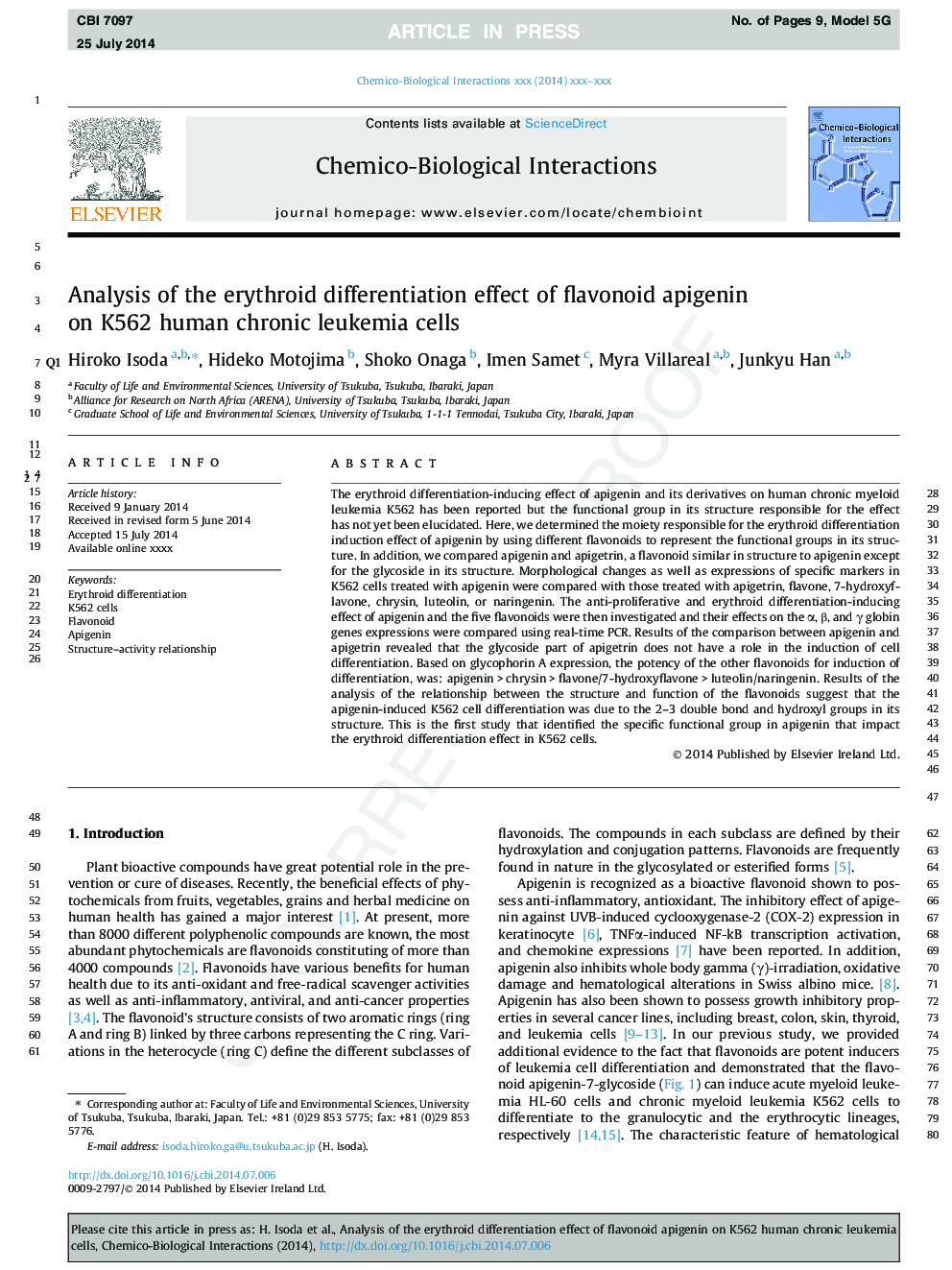| Article ID | Journal | Published Year | Pages | File Type |
|---|---|---|---|---|
| 5848004 | Chemico-Biological Interactions | 2014 | 9 Pages |
Abstract
The erythroid differentiation-inducing effect of apigenin and its derivatives on human chronic myeloid leukemia K562 has been reported but the functional group in its structure responsible for the effect has not yet been elucidated. Here, we determined the moiety responsible for the erythroid differentiation induction effect of apigenin by using different flavonoids to represent the functional groups in its structure. In addition, we compared apigenin and apigetrin, a flavonoid similar in structure to apigenin except for the glycoside in its structure. Morphological changes as well as expressions of specific markers in K562 cells treated with apigenin were compared with those treated with apigetrin, flavone, 7-hydroxyflavone, chrysin, luteolin, or naringenin. The anti-proliferative and erythroid differentiation-inducing effect of apigenin and the five flavonoids were then investigated and their effects on the α, β, and γ globin genes expressions were compared using real-time PCR. Results of the comparison between apigenin and apigetrin revealed that the glycoside part of apigetrin does not have a role in the induction of cell differentiation. Based on glycophorin A expression, the potency of the other flavonoids for induction of differentiation, was: apigenin > chrysin > flavone/7-hydroxyflavone > luteolin/naringenin. Results of the analysis of the relationship between the structure and function of the flavonoids suggest that the apigenin-induced K562 cell differentiation was due to the 2-3 double bond and hydroxyl groups in its structure. This is the first study that identified the specific functional group in apigenin that impact the erythroid differentiation effect in K562 cells.
Related Topics
Life Sciences
Environmental Science
Health, Toxicology and Mutagenesis
Authors
Hiroko Isoda, Hideko Motojima, Shoko Onaga, Imen Samet, Myra O. Villareal, Junkyu Han,
